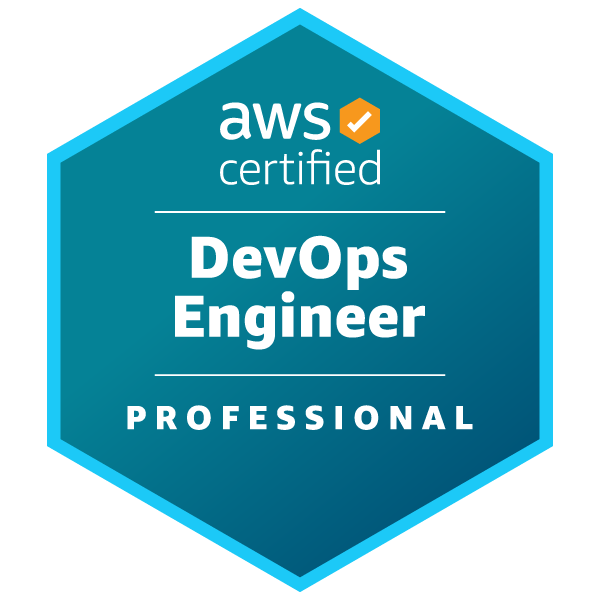DOP-C02

| Formats: | Asynchronous |
| Blended | |
| Online | |
| Onsite | |
| Part-time | |
| Level: | Intermediate |
| Prerequisites: | |
| Recommended Knowledge | |
| Experience with AWS Services | |
| Understanding of DevOps Practices: | |
| Experience with Automation and Configuration Management | |
| Required Prerequisites | |
| AWS SysOps Administrator Associate | |
Formats: We offer our training content in a flexible format to suit your needs. Contact Us if you wish to know if we can accommodate your unique requirements.
Level: We are happy to customize course content to suit your skill level and learning goals. Contact us for a customized learning path.
AWS DevOps Engineer Professional (DOP-C02)
The AWS DevOps Engineer Professional certification builds on the SysOps Associate and Developer Assoicate certifications to provide one with the skills and knowledge to provision, operate, monitor and manage scalable, distributed applications running on AWS, Our DevOps Engineer Professional training course will teach you the principles of and how to implement a DevOps approach to cloud solution engineering on AWS. You will learn to automate processes in a continuous delivery pipeline that ensure the deployment of secure, scalable cloud solutions.
AWS DevOps Engineer Professional Course Outline
Domain 1: Continuous Delivery and Process Automation
1.1 Demonstrate an understanding of application lifecycle management: Application deployments management strategies such as rolling deployments and A/B. Version control, testing, build tools and bootstrapping.
1.2 Demonstrate an understanding of infrastructure configuration and automation.
1.3 Implement and manage continuous delivery processes using AWS services
1.4 Develop and manage scripts and tools to automate operational tasks using the AWS SDKs, CLI, and APIs
Domain 2: Monitoring, Metrics, and Logging
2.1 Monitor availability and performance.
2.2 Monitor and manage billing and cost optimization processes.
2.3 Aggregate and analyze infrastructure, OS and application log files.
2.4 Use metrics to drive the scalability and health of infrastructure and applications.
2.5 Analyze data collected from monitoring systems to discern utilization patterns.
2.6 Manage the lifecycle of application and infrastructure logs
2.7 Leverage the AWS SDKs, CLIs and APIs for metrics and logging.
Domain 3: Security, Governance, and Validation
3.1 Implement and manage Identity and Access Management and security controls.
3.2 Implement and manage protection for data in flight and at rest.
3.3 Implement, automate and validate cost controls for AWS resources.
3.4 Implement and manage automated network security and auditing.
3.5 Apply the appropriate AWS account and billing set-up options based on business requirements.
3.6 Implement and manage AWS resource auditing and validation.
3.7 Use AWS services to implement IT governance policies
Domain 4:High Availability and Elasticity
4.1 Determine appropriate use of multi-Availability Zone versus multi-region architectures.
4.2 Implement self-healing application architectures.
4.3 Implement the most appropriate front-end scaling architecture.
4.4 Implement the most appropriate middle-tier scaling architecture.
4.5 Implement the most appropriate data storage scaling architecture.
4.6 Demonstrate an understanding of when to apply vertical and horizontal scaling concepts appropriately